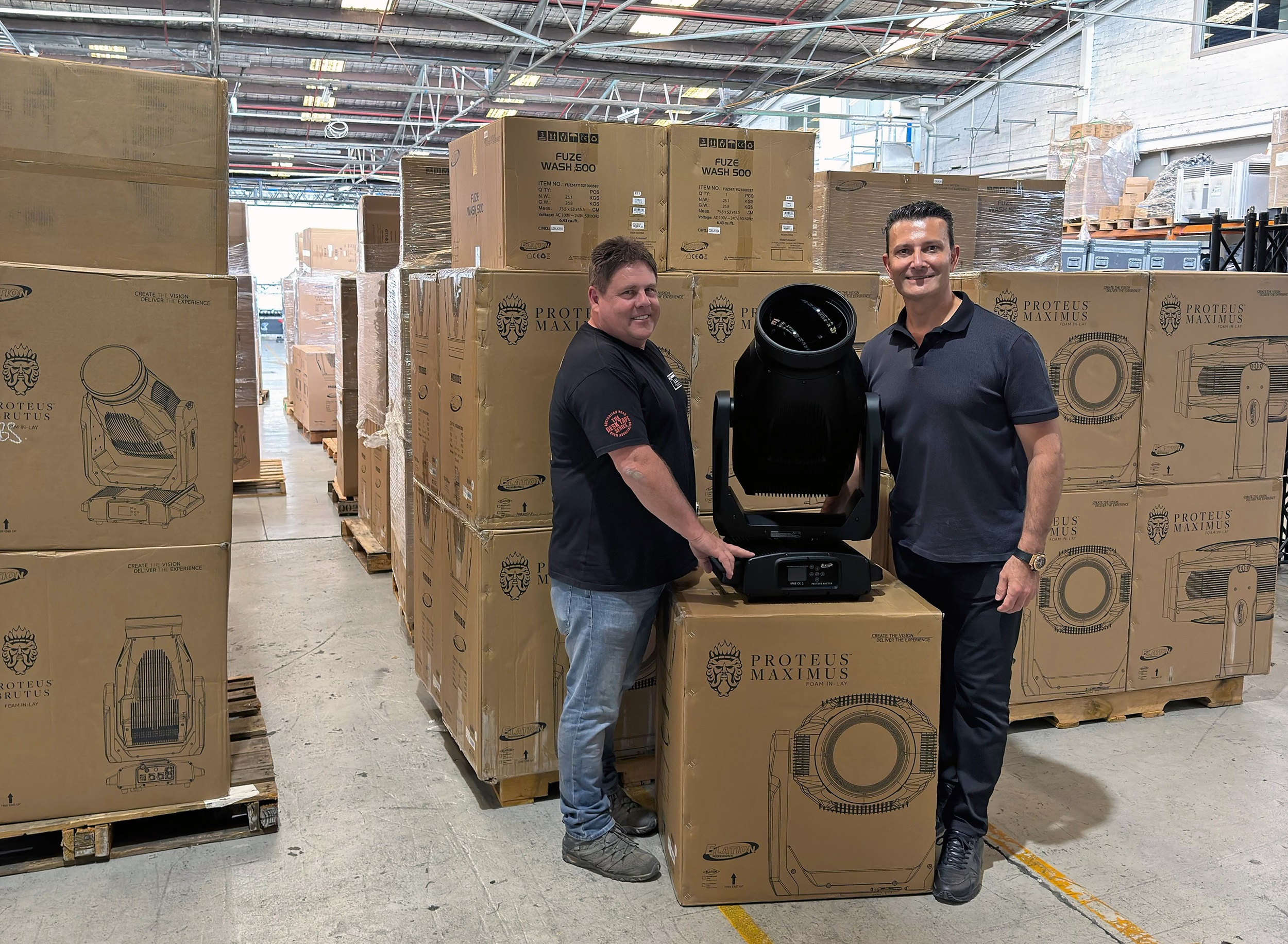MALMO, Sweden – Lighting designer Fredrik Jönsson specified more than 700 Clay Paky fixtures to provide lighting effects forming the centerpiece of the 2013 Eurovision Song Contest. With the theme “We Are One,” a key element was the ability to include the audience with whatever happened onstage, as part of the televised experience. Jönsson’s approach to the design was to create a massive video projection wall, using the lighting rig – placed on fixed and movable trusses – as the main attraction.
More details from Clay Paky (www.claypaky.it):
MALMO, Sweden – Lighting designer Fredrik Jönsson specified more than 700 Clay Paky fixtures to provide lighting effects forming the centerpiece of the 2013 Eurovision Song Contest. The large supply of equipment was coordinated by Clay Paky’s Swedish distributor, Interlite AB, that managed contacts with technical supplier Starlight as well as with SVT (Swedish Television), producers of the ESC 2013.
The southern city of Malmö, Sweden hosted the 57th Eurovision event at the Malmö Arena. The three live shows, consisting of two semi-finals and a final, were watched on television and online by an estimated audience of more than 120 million people with a live audience of more than 11,000 at the final broadcast.
The event was televised by host broadcaster, Sveriges Television (SVT) and featured a core production team working under Executive Producer Martin Österdahl and Show Producer Christer Björkman. Technical Director was Ola Melzig, with lighting design by Fredrik Jönsson and Emma Landare. Stage designers were Viktor Brattström and Frida Arvidsson.
Rental house Starlight, in close cooperation with PRG, supplied all lighting, rigging and sound equipment and crew for the show, which used more than 250 crew members.
For this year’s event, LD Jönsson wanted a powerful stage rig to surround the 220 square meter stage surface with which he could create a sufficient variety of visual moods and textures to underpin the tones of the musical performances. With the theme of “We Are One,” a key element was the ability to include the audience with whatever happened onstage, as part of the televised experience.
Jönsson’s approach to the design was to create a massive video projection wall, using the lighting rig – placed on fixed and movable trusses – as the main attraction.
Clay Paky fixtures made up the majority of the stage lighting and making a few “firsts” for some of the products. It is now the production using the most number of Sharpys in any show, using 200 and making the backbone of the rig. It also was a big performance for 75 of the new Sharpy Wash fixtures, one of Clay Paky’s newest products. There were 50 of Clay Paky’s new Glow Up Strip 100s used, along with 50 Alpha Beam 1500, 50 Alpha Profile 1500, 129 Alpha Spot HPE 1500, 40 Alpha Spot QWO 800 (16 in the Green room), 58 A.leda Wash K10 and 49A.leda Wash K5.
Said Jönsson, “The Clay Paky supply was comprehensive since they have almost every tool one might need in their catalog. I was particularly impressed by the Sharpy Wash and the Alpha Beam 1500, both were new to me. The Sharpy Wash is a very fine piece of equipment and the zoom is just incredible; we had to be very careful with it, when we zoomed them out we lost contrast on stage due to their enormous coverage. The punch and colors out of that little unit are mind-blowing.”
He added, “As for the Alpha Beam 1500, it delivers quite the opposite: a fairly big, chunky beam with huge output and the ability to produce sharp gobos within that beam is just great. I loved them and used them for big aerial effects. All the 200 Sharpys were the real workhorses of the show, trustworthy and always up for delivery. I wouldn’t have done the show without them.”
Ola Melzig agrees, saying that the Clay Paky Sharpys delivered “fantastic output, fantastic optics,” and are “just so reliable.”
Lighting was controlled via 12 grandMA2 Light consoles (6 main plus 6 back up) using 24500 control channels. Lighting operators were Calle Brattberg, Timo Kauristo, Pontus Lagerbielke and Danne Persson.
The LD said, “Overall, having a rig where all moving lights are Clay Paky saves a lot of time, since the color uniformity and the matching gobos make it easy and quick to program.”


